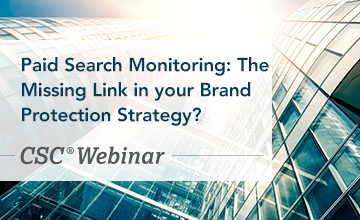By Marie Le Maitre, Global Marketing Manager
Every day around the world, more than five billion searches are conducted on Google alone. With e-commerce on the rise, businesses

need a strategic and targeted approach to promote their brand online. Paid search advertising is one great way approach, but it comes with its own set of risks.
1. Unauthorized trademark bidding
If you work for a popular company with a well-known brand, your trademark is likely being used in paid search advertising. Brand owners often choose to allow partners, resellers, or even affiliates use their brand name in advertising, but not everyone using a brand trademark has been given permission.
Because Trademark rights in paid search advertising differ by country—for example, the U.S. and U.K. are more lenient, while the European Union is stricter—a full understanding of who is using your brand name on all search engines is important. However, unless you proactively send an official complaint to a specific search engine—bearing in mind that there are quite a few out there worldwide—your brand, in conjunction with any other key trademarked terms, is being used illegally by other companies to sell their products and services.
2. Ad hijacking
Affiliate programs can be great for increasing your brand’s visibility and acquiring customers outside of direct marketing channels. However, select affiliates may engage in behavior that is detrimental to both your brand and revenue. By using similar headlines, descriptions, and the same display URL to that of your brand, affiliates increase their chance of grabbing direct search traffic.
Hijacking comes into play when a third-party advertiser creates an ad that displays another company’s branded URL, resulting in your company competing for the same traffic as the hijacker, and thus, higher bidding costs. Additionally, an affiliate hijacker can choose to redirect the traffic to the brand owner’s URL, earning a commission on the sale, or divert the traffic to its own URL, resulting in lost traffic for your brand, and higher bidding costs, as well as consumer confusion.
3. Malicious advertising
Cyber crime is prevalent in paid search advertising, and could be used to scam your customers or install malware on their network. In 2016, Google took down 1.7 billion ads that violated their advertising policies, doubling the amount they’d flagged in 2015. Later, in February 2017, Google again let paid search fraudsters slip through the cracks and post a fake Amazon ad that appeared above legitimate Amazon.com® ads. Clicking the link led consumers to a fraudulent site—“the blue screen of death”—insinuating their computer had been infected with malware (which it had not, actually).
Companies with brand protection in place should remember to include paid search monitoring as an integral part of their overall strategy. Spotting infringements early on ensures that customers reach your site, and that the ads they see are consistent with your brand image and policy.
This post is the abridged version of an article originally published at Masterclassing.com. To read more on how to protect your online assets with a digital audit, go to cscdigitalbrand.services.
